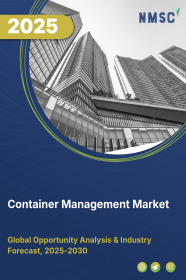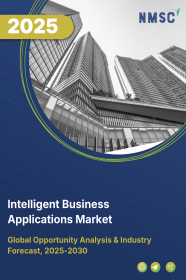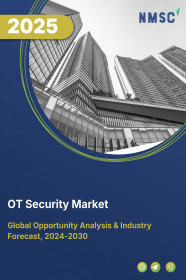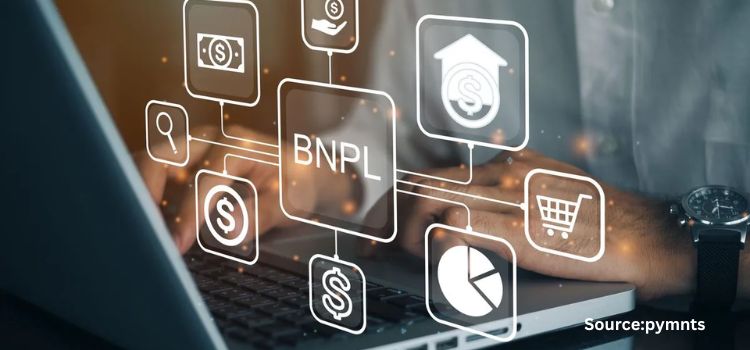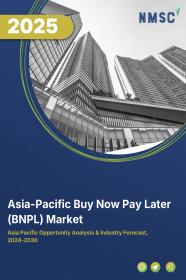
Asia-Pacific Buy Now Pay Later (BNPL) Market by Offering (Online, Point of Sale (PoS)), by Age Group (Millennials, GenZ, GenX, Baby Boomers), by Application (Consumer Electronics, Fashion & Garments, Media & Entertainment, Healthcare & Wellness, Automotive, Furnishing, Other Application) - Opportunity Analysis and Industry Forecast, 2024– 2030
Industry: ICT & Media | Publish Date: 09-Jan-2025 | No of Pages: 201 | No. of Tables: 137 | No. of Figures: 82 | Format: PDF | Report Code : IC2133
US Tariff Impact on Asia-Pacific Buy Now Pay Later (BNPL) Market
Trump Tariffs Are Reshaping Global Business
Asia-Pacific Buy Now Pay Later (BNPL) Market Overview
The Asia-Pacific Buy Now Pay Later (BNPL) Market size was valued at USD 41.90 billion in 2023, and is predicted to reach USD 339.72 billion by 2030, at a CAGR of 29.4% from 2024 to 2030. Buy now pay later (BNPL) is a convenient short-term financing option that allows consumers to defer payment for purchases to a later date. This payment method, structured with an installment plan, involves consumers, financiers, and merchants, enabling customers to shop online and in stores without immediate full payment. BNPL is versatile, covering a wide range of purchases from everyday items including clothing and electronics to larger expenses such as home improvement products.
The popularity of BNPL is on the rise due to its numerous advantages for consumers. It provides a flexible way to buy high-cost items such as smartphones and laptops, pay for educational expenses including tuition fees and stationery, and even cover daily expenses such as canteen bills. Additionally, the introduction of zero-interest payment options by BNPL providers makes this payment solution even more appealing to customers, offering them a convenient and attractive payment alternative.
Rising E-Commerce Platforms with Online Payment Methods Thrives the Asia-Pacific Buy Now Pay Later (BNPL) Market Growth
The rise of e-commerce shopping creates a pivotal role in driving the growth of the Buy Now Pay Later (BNPL) market. As online shopping continues to gain traction among consumers for its convenience and variety, BNPL services have seamlessly integrated into e-commerce platforms, offering shoppers the option to pay for purchases in installments.
This integration not only increases conversion rates for online retailers but also leads to higher average order values as consumers feel empowered to make larger purchases without the immediate financial burden. Moreover, by providing BNPL options, e-commerce retailers gain a competitive advantage, attracting and retaining customers who seek the convenience and financial flexibility of flexible payment solutions.
The alignment between BNPL services and the preferences of online shoppers underscores the symbiotic relationship between the rise of e-commerce and the expansion of the BNPL market, making it a significant player in the evolving landscape of digital payments.
Increasing Consumer Convenience for Online Shopping is Thriving the Asia-Pacific Buy Now Pay Later (BNPL) Market Growth
The expansion of the Buy Now Pay Later (BNPL) market trends is propelled significantly by its unparalleled convenience for consumers. In contrast to conventional payment modalities mandating upfront full payment, BNPL services enable customers to disburse their purchases into smaller, manageable installments over time.
This adaptability is particularly enticing to individuals encountering transient financial constraints or those intending to distribute their expenditures. With streamlined application procedures and instantaneous approval verdicts, BNPL presents a seamless alternative to orthodox financing avenues such as credit cards or personal loans.
By aligning with contemporary consumer inclinations favouring simplicity and adaptability in financial management, BNPL has emerged as a pivotal force in the evolving realm of payment solutions, catalyzing its widespread acceptance and expansion.
High Interest Rates and Fees Associated Hinder the Asia-Pacific Buy Now Pay Later (BNPL) Market Growth
The high fees and interest rates within the buy now, pay later (BNPL) sector possess the potential to impede its progression by dissuading consumers from availing themselves of these offerings. BNPL transactions conventionally entail staggered payments coupled with supplementary charges or interest fees.
Should these charges be perceived as excessively steep, consumers might incline towards alternate payment modalities or abstain from accumulating further indebtedness. Such hesitancy towards BNPL utilization stands to constrict market enlargement and erode consumer confidence.
To mitigate this challenge, BNPL providers must meticulously regulate their fee frameworks and interest rates, ensuring affordability while preserving competitiveness. Emphasizing transparent pricing, lucid articulation of terms, and conscientious lending practices emerges as imperative in fostering trust and promoting widespread BNPL adoption. Additionally, regulatory oversight might contribute to guaranteeing equitable and transparent pricing practices across the BNPL sector.
Integration of Artificial Intelligence (AI) Technology Creates Ample Opportunity Growth for the Asia-Pacific Buy Now Pay Later (BNPL) Market
Leveraging Artificial Intelligence (AI) for credit scoring within the buy now, pay later (BNPL) market signifies a transformative approach to evaluating consumer creditworthiness. Unlike traditional methods, AI-driven algorithms have the capacity to scrutinize a diverse array of data sources, encompassing not only conventional credit history but also unconventional indicators like online shopping habits and social media activity.
This broader spectrum of data allows for a more comprehensive and nuanced understanding of an individual's financial behavior and repayment capacity. Consequently, BNPL providers can make more accurate and timely credit assessments, leading to increased approval rates for deserving customers and the provision of tailored financing options.
Furthermore, AI algorithms can continuously learn and adapt to evolving consumer trends, enhancing the precision of credit assessments over time. In essence, integrating AI into credit scoring processes within the BNPL market not only strengthens risk management capabilities but also fosters a more personalized and streamlined customer experience.
China Holds the Dominant Market Share in Asia-Pacific Buy Now Pay Later Market
The surge in the BNPL market is significantly propelled by the preferences of Millennials and Gen Z. These younger generations exhibit a distinct inclination towards BNPL services due to their intrinsic value for financial flexibility and aversion to traditional credit card models.
With many facing financial constraints such as student loans and high living costs, the appeal of spreading payments over time without incurring interest charges resonates strongly. Moreover, their tech-savvy nature and habitual online shopping behavior dovetail neatly with the seamless integration of BNPL options into e-commerce platforms.
By offering transparent, interest-free installment plans, BNPL services align with the values of these generations, who prioritize responsible spending and digital convenience. As a result, BNPL providers catering to the preferences of Millennials and Gen Z stand poised to capture a significant share of this burgeoning market.
The adoption of buy now pay later (BNPL) services by merchants is a crucial driver fueling the expansion of the BNPL market. This phenomenon entails the incorporation of BNPL payment alternatives into the product portfolios of a growing array of retailers and online commerce platforms.
For consumers, this signifies enhanced payment versatility, enabling them to stagger the expense of purchases across installments rather than remitting the entire sum upfront. This heightened flexibility resonates with shoppers, particularly for high-value acquisitions, rendering transactions more feasible within their financial constraints.
Simultaneously, for enterprises, the provision of BNPL choices can result in augmented sales volumes and conversion rates. By furnishing alternative payment modalities, merchants can allure a wider clientele while mitigating instances of abandoned shopping carts.
The assimilation of BNPL services across diverse retail channels aids merchants in preserving competitiveness by accommodating the preferences of consumers, notably younger demographics who prioritize the convenience and adaptability of BNPL solutions. As more merchants adopt BNPL alternatives, the market is primed for further proliferation and ingenuity, propelling sustained expansion within the BNPL sector.
India to Witness Substantial Growth in the Asia-Pacific Buy Now Pay Later Market
The growth trajectory of the Buy Now Pay Later (BNPL) market has been significantly influenced by the ascent of e-commerce. With consumers increasingly favouring online shopping due to its convenience and extensive product offerings, BNPL services have seamlessly integrated into e-commerce platforms, enabling customers to split their payments into manageable installments.
This integration not only boosts conversion rates for online retailers but also drives up the average order value, as consumers are emboldened to make larger purchases without immediate financial strain. Furthermore, by incorporating BNPL options, e-commerce merchants gain a competitive edge, attracting and retaining customers who value the convenience and financial flexibility afforded by such payment solutions.
The alignment between BNPL services and the preferences of online shoppers underscores the mutually beneficial relationship between the proliferation of e-commerce and the expansion of the BNPL market, solidifying its significance in the evolving digital payments landscape.
The expanding buy now pay later (BNPL) sector is being driven by the rising prevalence of online shopping. With digital commerce increasingly dictating consumer choices, individuals are embracing the ease of purchasing goods and services online.
This upsurge in online transactions has spurred a rising demand for adaptable payment solutions that accommodate various financial requirements. BNPL services have emerged as a leading contender in addressing this demand, providing consumers with the flexibility to postpone payments or distribute expenses across manageable installments.
This adaptability appeals to a wide range of shoppers, from those seeking prudent financial management strategies to those seeking immediate access to desired products without the burden of upfront payments. The mutually beneficial relationship between online shopping and BNPL services signifies a transformative change in consumer behavior and payment preferences, indicating ongoing expansion and innovation in the BNPL market.
Competitive Landscape
The market players operating in the Asia-Pacific buy now pay later industry include Atome, ShopBack, Akulaku, Kredivo, Indodana Finance, Fundiin, Plentina Lending, Inc., Cashalo, TendoPay, Latitude Financial Services, Laybuy Holdings Ltd, Affirm, Simpl, Alibaba, Zip Co Limited, and others.
Asia-Pacific Buy Now Pay Later Market Key Segments
By Offering
-
Online
-
Point of Sale (PoS)
By Age Group
-
Millennials
-
GenZ
-
GenX
-
Baby Boomers
By Application
-
Consumer Electronics
-
Fashion & Garments
-
Media & Entertainment
-
Healthcare & Wellness
-
Automotive
-
Furnishing
-
Other Application
By Country
-
China
-
India
-
Japan
-
South Korea
-
Australia
-
Indonesia
-
Singapore
-
New Zealand
-
Rest of Asia-Pacific
REPORT SCOPE AND SEGMENTATION:
|
Parameters |
Details |
|
Market Size in 2023 |
USD 41.90 Billion |
|
Revenue Forecast in 2030 |
USD 339.72 Billion |
|
Growth Rate |
CAGR of 29.4% from 2024 to 2030 |
|
Analysis Period |
2023–2030 |
|
Base Year Considered |
2023 |
|
Forecast Period |
2024–2030 |
|
Market Size Estimation |
Billion (USD) |
|
Growth Factors |
|
|
Countries Covered |
8 |
|
Companies Profiled |
10 |
|
Market Share |
Available for 10 companies |
|
Customization Scope |
Free customization (equivalent up to 80 working hours of analysts) after purchase. Addition or alteration to country, regional, and segment scope. |
|
Pricing and Purchase Options |
Avail customized purchase options to meet your exact research needs. |
KEY PLAYERS
-
Atome
-
ShopBack
-
Akulaku
-
Kredivo
-
Indodana Finance
-
Fundiin
-
Plentina Lending, Inc.
-
Cashalo
-
TendoPay
-
Latitude Financial Services
-
Laybuy Holdings Ltd
-
Affirm
-
Simpl
-
Alibaba
-
Zip Co Limited

















 Speak to Our Analyst
Speak to Our Analyst



